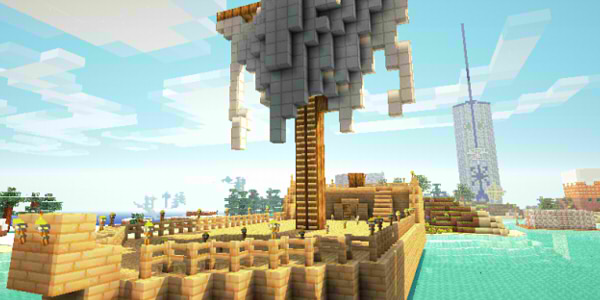The answer is procedurally generated content! After watching the trailer for Planet Explorers, it occurs to me that procedurally generated gameplay has a huge advantage over other modes of play. It allows any player that picks up a game to have a unique, customized experience as they explore new areas or collect new weapons. Replay value goes up, since each playthrough would be a different experience, and the players would have an entirely different house to build, or a new path to find the final boss. Like open-world games, it gives players the freedom to explore—so now my question is, why aren’t more games doing this?
Procedurally generated content is all based on a code or algorithm put into the game, and was originally used because large, pre-generated areas took up too much memory to fit into older games. As technology increased, procedurally generated content drifted out of the spotlight, only showing up in games like Dark Cloud, Diablo, and Persona 3. The Elder Scrolls II: Daggerfall used procedurally generated content to make a gameplay area over twice the size of Great Britain—with roughly 7500 NPCs to populate it. The next two sequels in the series (Morrowind and Oblivion) did not use procedural generation for spells, items, land, or NPCs—and these numbers plummeted to 10 and 16 square miles respectively to explore, and about 1000 NPCs to interact with. There’s a difference between quantity and quality, sure, but the newer games certainly lacked some of its previous charm.
Games such as Diablo 3, Planet Explorers, and Starforge show that even generated content can still have a polished and refined look without resorting to Minecraft-like graphics. They don’t have the same graphical detail of, say, Skyrim or a Final Fantasy game, but with a larger budget it’s certainly possible. The ‘disadvantage’ of not having meticulously crafted level design can be overcome by close work between the programmers and artists, to make sure that randomized objects or terrain don’t look mismatched or out of place. The A. I. Director of Left 4 Dead 2 shows that procedural generation can also be used to make games more exciting by keeping track of the player’s statistics and adding or removing events and enemies accordingly.
There is a time and a place for everything. I’m not saying every development company should focus on procedurally generated content. Just like the comparison of linear games to open world games, both kinds of generation have their strengths and weaknesses. However, procedurally generated content has been out of the limelight for quite a while, and there’s room for game developers to explore. Only a few high-profile games utilize it, even though it would make games like Skyrim or Grand Theft Auto that much more fun to explore. The reduced amount of memory should allow for better usage for the rest of the physical disks (in the case of console games) and a smaller impression on someone’s harddrive (in the case of PCs). While regular games have the advantage of a shared and fine-tailored experience, procedurally generated content gives more reason to replay a game than anything else.

0 Comments